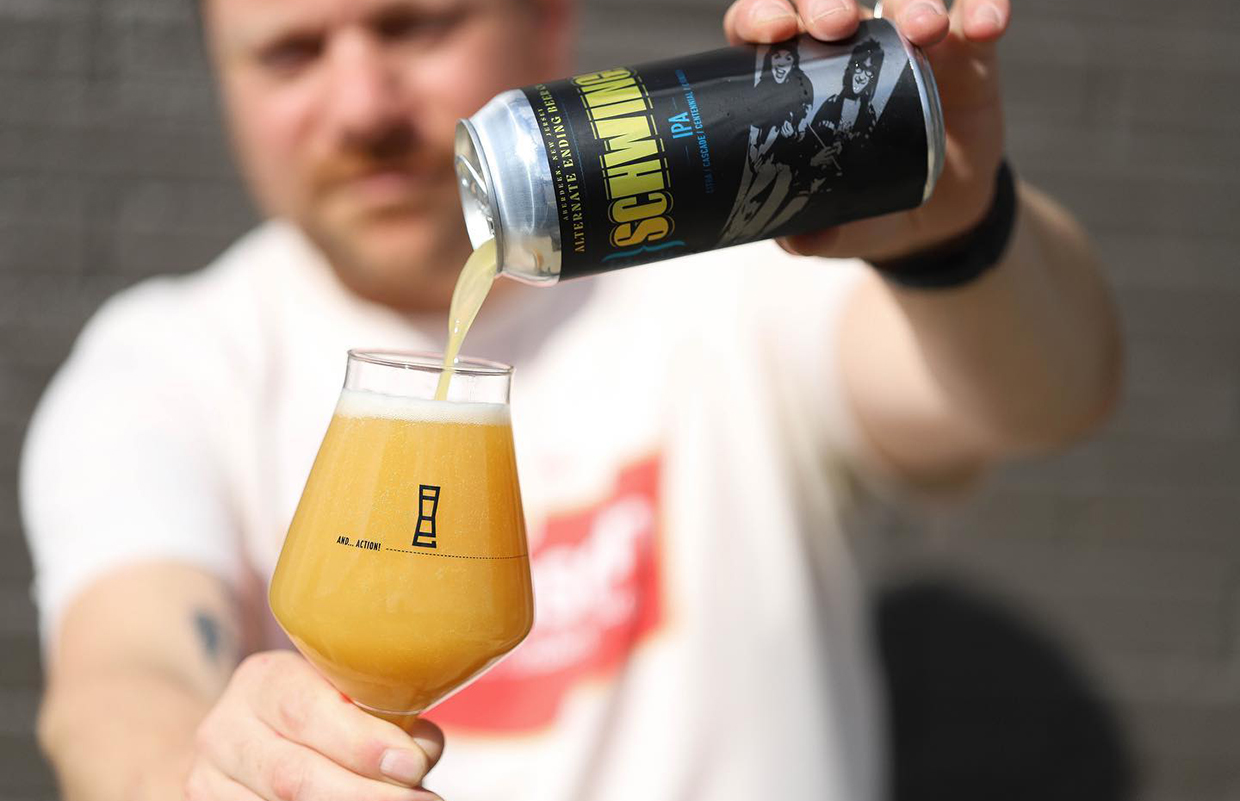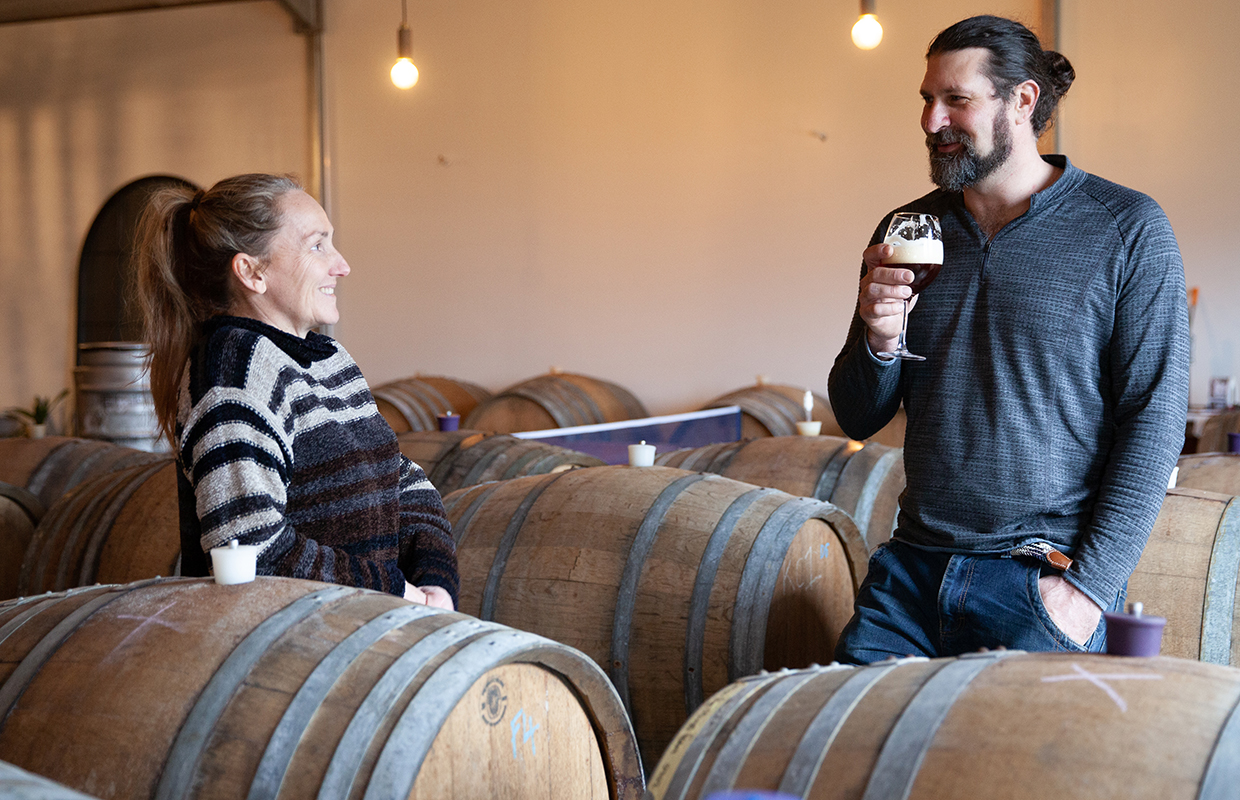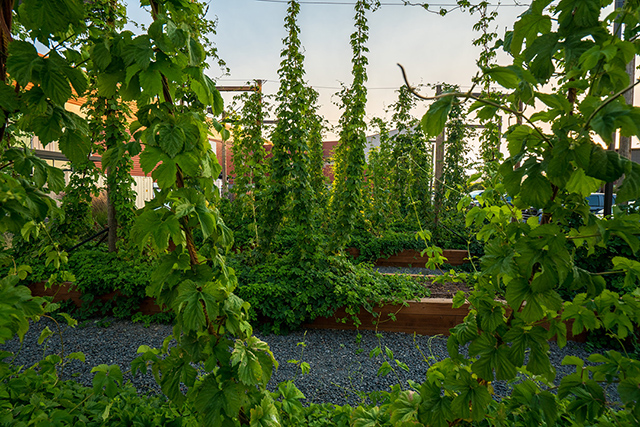
The abundance of use of a yeast strain like London III has helped give rise to hazy IPAs and its ilk. Yet, over the past few years, the introduction of Phantasm and more thiolized yeast strains have given rise, which allows brewers to rethink which is the best use for their brands.
In a supplement to the September/October print issue of Brewer for a Yeast Q&A, we asked a variety of breweries about such a quandary.
“London III is a great workhorse for these everyday Hazy IPAs and Imperial Stouts which are two styles that don’t seem to be going anywhere,” said Alternate Ending Beer Co.’s Brendan Arnold. “Thiolized yeast strains are gaining popularity but right now I don’t think it makes sense to have Phantasm, thiolized products, or primary dry hops in every IPA.
“It’s more of a premium product. We need to harvest and reuse yeast to keep this brewery going. Now that we know it, we’ve been working really well together.”
Dan Ouellette at Fall Brewing told Brewer they have mixed feelings on thiolized yeast strains.
“We have had some great beers brewed with them and some beers that have fallen quite short of our expectations,” he said. “That being said, I don’t think that they will replace more traditional ‘hazy’ yeast strains by any means.
“Products like Phantasm are a phenomenal tool for brewers as it is essentially, from my understanding of the product, pure thiols: those ultra-concentrated compounds that we strive so hard to coax out of hops with each hazy beer we create. The addition of products like Phantasm, enhances the hops that they are used with, creating the potential for that ultra juicy, deeply turbid, hazy IPA we all lust after.”
READ MORE: All the Smells!: WeldWerks Experiments with Phantasm Powder in DIPA
He added there is a place for all these new products, however, he does not think they will fully replace the hazy yeast strains brewers currently love.
“Brewing is a marriage of ingredients and passion, our pantry is just getting bigger,” he said.
No Label’s Ryan Traylor said they have used less London Ale III over the last year or so; mainly because they have been playing around with thiolized yeast and products like Phantasm.
“I find these products to produce amazing beers,” he said, “but I have not switched our core hazy yeast away from London Ale III because it produces the mouthfeel and aromas/flavors that I find pleasant in a good hazy IPA.”
Traylor feels that many of the Hazy IPAs that we have come to know today were produced with London Ale III.
“I believe it will always be a highly used strain,” he said. “Many core Hazy IPAs were designed around London Ale III and not many breweries are switching yeast up on core beers very often.”
Joshua Ellis of M Special Brewing doesn’t see the primary yeast being used in one of today’s hottest beer styles being used less in the coming years. But, he added, styles always evolve and rotate in prominence.
“Until the next ‘new thing’ comes along to soak up the demand in the NEIPA market, I think it’s sticking around,” Ellis said. “Phantasm and other Thiol-promoting products have the potential to enable brewers to dial in specific flavor profiles. But in reality, just like hops, fruits, flavor extracts, yeast, grist combinations, ramping schedules, etc., even these technically advanced products will require real work experimentation for brewers to dial in their use and get consistent results.
“Brewing is part science and part art. The experience is where the artistry happens.”
Photo courtesy Alternate Ending Beer




Be the first to comment